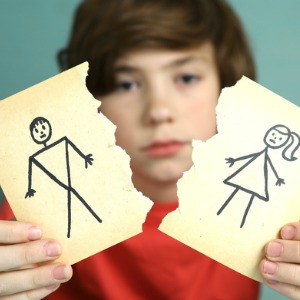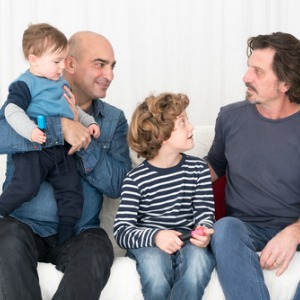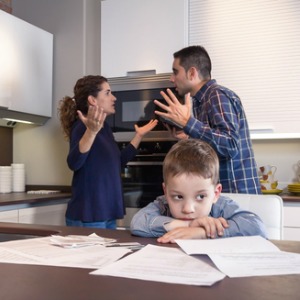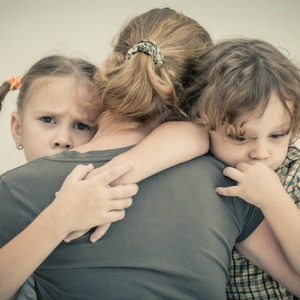Relationships
 MARRIAGE / RELATIONSHIP THERAPY
MARRIAGE / RELATIONSHIP THERAPY
All couples have conflicts or disagreements at times.
The difference between a happily married (or otherwise committed) couple and an unhappy union most frequently involves the ability to discuss and resolve those differences in a positive manner that respects the interests and needs of each individual.
Common unhealthy, damaging relationship communications usually include such interactions as:
- Hostility, or verbal or physical attacks on the other person
- Put-downs, name-calling or other contempt for the partner
- Dragging old information or experiences into a current argument
- Defensive responses
- Withdrawal from a disagreement
- Escalating negativity in the relationship
The goals of a marriage/relationship therapy are generally to help the couple:
- Improve communication patterns
- Develop empathic, active listening skills
- Improve problem-solving skills
- Resolve conflicts in ways that meet the needs of both partners
- Explore ways for old wounds (from this or previous relationships) to be healed
- If possible, find ways to stay together in a positive and mutually satisfying relationship
- If not possible to stay together, then to separate in a healthy and respectful way
 DIVORCE / RELATIONSHIP BREAKUP
DIVORCE / RELATIONSHIP BREAKUP
When you lose a close friend or love relationship, you are likely to feel great sorrow and heartache. Even when a bad relationship ends, there can be deep pain and grief. Coping with a divorce or relationship breakup of any kind can be very painful, and most people go through this experience at some point in their lives. But the challenges posed by such a deep loss can be turned into opportunities, enabling you to not only survive, but also thrive. Learn to understand your feelings and develop tools to cope with your relationship breakup or divorce.
Breaking up a relationship is difficult – especially if it’s not your choice. Grief can be experienced even when an unfulfilling relationship ends, because, at the very least, you have lost the emotional investment you made in that relationship. There may be a sense of failure, hopelessness, loss, despair, fear, or desperation. In many cases, the length of the relationship compounds the pain of loss – a divorce after half a lifetime together can seem like the end of the world. Partly, it depends on how much you had vested, spiritually, emotionally and financially. But even short-term relationships can involve an investment in fantasy and in hopes for the future, and their loss can be similarly heart-wrenching.
 CO-PARENTING
CO-PARENTING
If you’ve decided to separate or get a divorce, your next most important decision could be about co-parenting. People who separate but continue to work cooperatively as parents have a very positive effect on their children’s development and adjustment to living in two separate households. It can be difficult to manage your emotions while co-parenting and it may benefit you to seek additional support from a therapist.
Despite beginning with a sense of joy and commitment, about 50% of marriages in the U.S. end in divorce. Even though they will no longer be together as a couple, most people with children want to continue being good parents and to remain involved in their children’s lives. Co-parenting means sharing parenting responsibilities with someone living in a separate household.
 BLENDED FAMILIES
BLENDED FAMILIES
Today, at least one-third of all children in the U.S. are expected to live in a stepfamily before they reach age 18. The blended family is becoming more of a norm than an aberration. Born of conflict and loss, newfound commitment, and often heart-wrenching transition, stepfamilies face many lifestyle adjustments and changes.
Fortunately, most blended families are able to work out their problems and live together successfully. But it takes careful planning, open discussions of feelings, positive attitudes, mutual respect and patience.
Studies show that children of stepfamilies face a higher risk of emotional and behavioral problems. They also are less likely to be resilient in stressful situations. Although most parents are able to work out these problems within the family, they should consider seeking professional help for their children if the children exhibit strong feelings of isolation, being alone in dealing with their losses, torn between two parents or two households, or uncomfortable with any member of their original family or stepfamily.
It might be time to seek outside help for the entire family if:
- a child directs her anger upon a particular family member or openly resents a stepparent or parent
- one of the parents suffers from great stress and is unable to help with a child’s increased need for attention
- a stepparent or parent openly favors one of the children
- discipline of a child is left to the parent rather than involving both the stepparent and parent;
- members of the family derive no pleasure from usually enjoyable activities such as learning, going to school, working, playing, or being with friends and family.
By devoting the necessary time to develop their own traditions and form caring relationships, stepfamilies can create emotionally rich and lasting bonds for each member. In the process, the children acquire the self-esteem and strength to enjoy the challenges that lie ahead.
 CODEPENDENCY
CODEPENDENCY
Codependency is a psychological condition in which someone exhibits too much, and often inappropriate, caring for other people’s struggles. It is also known as “relationship addiction” because people with codependency often form or maintain relationships that are one-sided, emotionally destructive and/or abusive.
Codependence is often accompanied by depression, as the codependent person succumbs to feelings of extreme frustration or sadness over his or her inability to make changes in the other person’s (or persons’) life.
Individuals who are suffering from codependence may seek assistance through various verbal therapies, sometimes accompanied by chemical therapy for accompanying depression. In addition, there exist support groups for codependency; probably among the best-known of these are Co-Dependents Anonymous (CoDA) and Al-Anon/Alateen, both of which are based on the 12-Step model created by Alcoholics Anonymous.
Symptoms of codependence are:
- controlling behavior
- distrust
- perfectionism
- avoidance of feelings
- intimacy problems
- caretaking behavior
- hypervigilance or physical illness related to stress
 FAMILY CONFLICT
FAMILY CONFLICT
Family conflict is any conflict that occurs within a family. It could occur between husband and wife, parents and children, between siblings, or with extended family members (grandparents, aunts, uncles, etc.). Conflict is present in almost every family at one time or another. It’s a part of any relationship. Some families may be more prone to conflict. Poor communication can lead to problems. Family members may also “take sides,” which can create deeper splits in the household. It is how family members handle conflict that determines whether it becomes problematic or not.
Many events can cause friction or add to it.
A family may have trouble making adjustments after changes or differences involving:
- The birth of a baby
- Unemployment of one spouse
- Financial debt
- Children’s behavioral or emotional problems
- Problems with in-laws
- Trying to juggle busy activity schedules
- A serious illness of a family member
- Separation, divorce or becoming a stepparent
 DOMESTIC VIOLENCE AND ABUSE
DOMESTIC VIOLENCE AND ABUSE
Domestic abuse, also known as spousal abuse, occurs when one person in an intimate relationship or marriage tries to dominate and control the other person. An abuser doesn’t “play fair.” They use fear, guilt, shame, and intimidation to wear you down and gain complete power over you. They may threaten you, hurt you, or hurt those around you. Domestic abuse that includes physical violence is called domestic violence.
Victims of domestic abuse or domestic violence may be men or women, although women are more commonly victimized. This abuse happens among heterosexual couples and in same-sex couples. Except for the gender difference, domestic abuse doesn’t discriminate. It happens within all age ranges, ethnic backgrounds, and financial levels. The abuse may occur during a relationship, while the couple is breaking up, or after the relationship has ended.
Despite what many people believe, domestic violence is not due to the abuser’s loss of control over their behavior. In fact, violence is a deliberate choice made by the abuser in order to take control over their spouse/partner.
Recognizing the warning signs and symptoms of abuse is the first step to breaking free.
- Dominance — Abusive individuals need to feel in charge of the relationship. They will make decisions for you and the family, tell you what to do, and expect you to obey without question. Your abuser may treat you like a servant, child, or even as his possession.
- Humiliation — An abuser will do everything he can to make you feel bad about yourself, or defective in some way. After all, if you believe you’re worthless and that no one else will want you, you’re less likely to leave. Insults, name-calling, shaming, and public put-downs are all weapons of abuse designed to erode your self-esteem and make you feel powerless.
- Isolation — In order to increase your dependence on them, an abusive partner will cut you off from the outside world. They may keep you from seeing family or friends, or even prevent you from going to work or school. You may have to ask permission to do anything, go anywhere, or see anyone. (Source: Domestic Abuse Intervention Project, MN)
- Threats — Abusers commonly use threats to keep their victims from leaving or to scare them into dropping charges. Your abuser may threaten to hurt or kill you, your children, other family members, or even pets. They may also threaten to commit suicide, file false charges against you, or report you to child services.
- Intimidation — Your abuser may use a variety of intimation tactics designed to scare you into submission. Such tactics include making threatening looks or gestures, smashing things in front of you, destroying property, hurting your pets, or putting weapons on display. The clear message is that if you don’t obey, there will be violent consequences.
- Denial and blame — Abusers are very good at making excuses for the inexcusable. They will blame their abusive and violent behavior on a bad childhood, a bad day, and even on the victims of their abuse. Your abuser may minimize the abuse or deny that it occurred. They will commonly shift the responsibility onto you: Somehow, their violence and abuse is your fault.
If you’re afraid for your immediate safety, call 911. For help and advice on escaping an abusive relationship, call the National Domestic Violence Hotline at 1-800-799-SAFE (7233) or 1-800-787-3224.
 GRIEF
GRIEF
Losing someone or something you love is very painful — and it’s something that almost everyone will experience at some point in their lives. Loss that goes unacknowledged or unattended can result in disability. But grief that is expressed and experienced has a potential for healing that eventually can strengthen and enrich life. There is no right or wrong way to grieve — but there are ways to make your grieving more complete and more positive.
When someone close to you dies, you don’t just lose that person on the physical level, you also face the loss of what might have been. Your pain can involve missing that person’s presence: sleeping in a bed that’s half empty, craving a scent or an embrace. But knowing that your loved one will miss all of the milestones in your life often lasts longer than the pain of the physical absence. This may include the children that were never born, the trips not taken, colleges not attended, weddings not danced at — every life marker can be a reminder and an occasion for renewed grief.
Reprinted with permission from http://www.helpguide.org/. C 2008 Helpguide.org. All rights reserved.
SOURCE: www.helpguide.org


